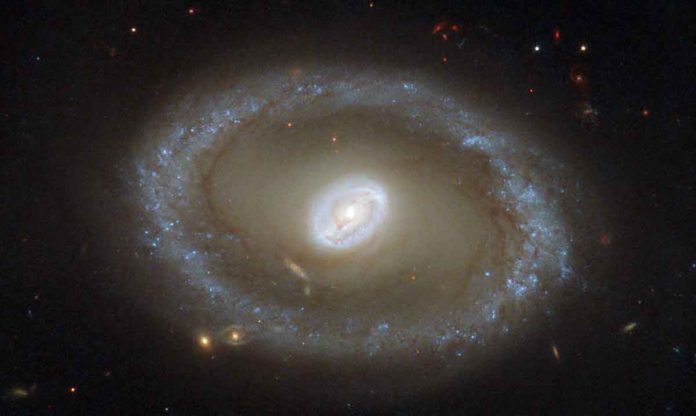Scientists at the National Astronomy Meeting will announce this week that human and machine intelligence collaborated to discover 40,000 ring galaxies. The new work will be presented by Dr. Mike Walmsley of the University of Manchester and the Galaxy Zoo collaboration, who will describe how this “cyborg” approach measured the shapes of millions of galaxies.
Galaxies lead chaotic lives. Collisions with other galaxies and supermassive black hole bursts of energy disrupt the colors and orbits of billions of stars, leaving tell-tale markers that volunteers search for on the Galaxy Zoo website. However, understanding which cosmic events lead to which markers necessitates millions of measured images—far more than humans could ever search for.
Dr. Mike Walmsley created an automatic assistant—a new AI algorithm—using a decade of Galaxy Zoo volunteer measurements (totaling more than 96 million clicks). The algorithm, dubbed “Zoobot,” can not only predict what volunteers will say, but it also understands where it might be wrong.
40,000 rare ring-shaped galaxies have been discovered, which is six times the number previously known. Rings form over billions of years and are destroyed in galaxy-galaxy collisions, so this massive new sample will aid in understanding how isolated galaxies evolve. The dataset will also reveal how galaxies age in general.

Zoobot is designed to be retrained for new scientific goals on a regular basis. Zoobot can easily learn to answer new shape questions because it has already learned to answer more than 50 different questions, just as a musician can learn a new instrument faster than their first instrument. According to Dr. Walmsley, “Zoobot brings humans and machines together to advance the science of astronomy. We’re assisting other astronomers in answering questions we never thought to ask.”
Dr. Brooke Simmons of the University of Lancaster, Galaxy Zoo’s Deputy Principal Investigator, adds, “This week marks the 15th anniversary of Galaxy Zoo, and we are still innovating. Dr. Walmsley’s work will enable a new generation of discoveries to be made from upcoming large galaxy surveys.”


This is AMAZING! Keep us informed.